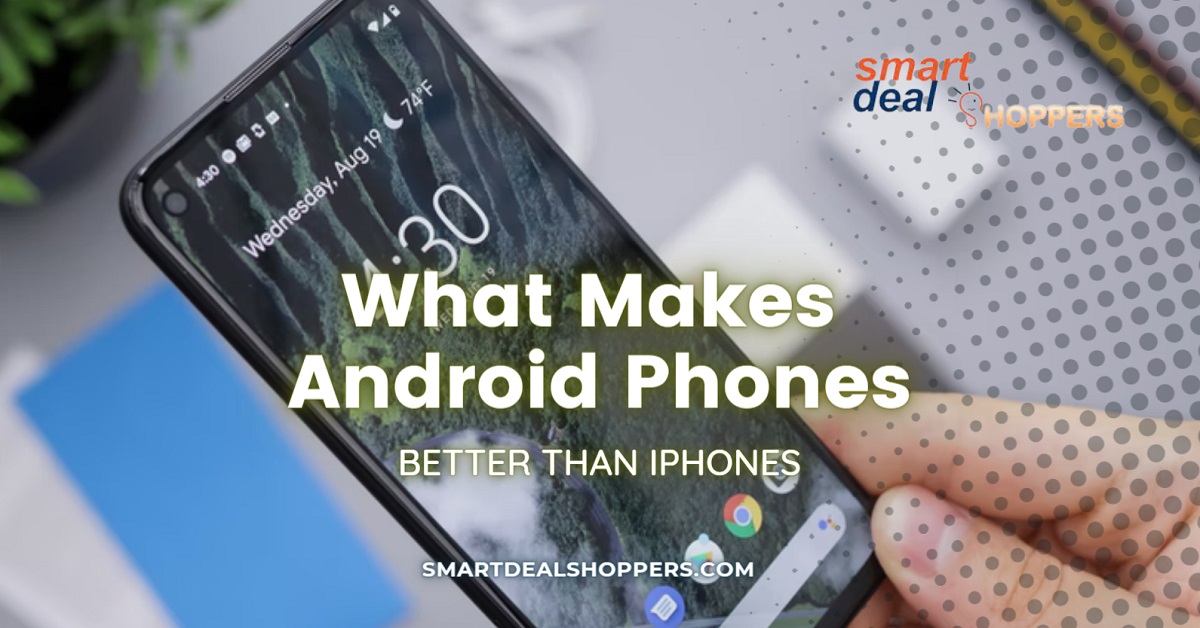
In the ever-evolving world of smartphones, the debate between Android and iPhone users continues to be a hot topic. As we step into 2025, the landscape has shifted significantly, with Android devices offering a plethora of features that often surpass their iPhone counterparts. From battery life to customization options, Android phones have made remarkable strides, making them a compelling choice for many consumers.
This article delves into the various aspects where Android phones excel over iPhones, providing a detailed analysis to help you make an informed decision.
10 Reasons Why Android Phones Better Than iPhones in 2025
1. Superior Battery Life
One of the most significant advantages of Android phones in 2025 is their impressive battery life. Devices like the Google Pixel 9a boast a 5,100-mAh battery, offering over 30 hours of usage on a single charge. Similarly, the OnePlus 13 is renowned for its exceptional battery performance and ultra-fast charging capabilities.
In contrast, iPhones, including the latest iPhone 16 series, often struggle to match this endurance, requiring more frequent charging. While Apple has made improvements, Android devices continue to lead in this domain.
2. Better Value for Money
Android phones offer a wide range of options catering to various budgets without compromising on quality. For instance, the Pixel 9a is priced at $499, providing premium features at a mid-range cost. In comparison, the entry-level iPhone 16e starts at $599, offering fewer features for a higher price.
This affordability makes Android devices more accessible to a broader audience, ensuring that users don’t have to break the bank for a high-quality smartphone experience.
3. Innovative Features and Customization
Android’s open-source nature allows manufacturers to introduce unique features tailored to specific user needs. From thermal cameras to night vision capabilities, Android phones offer functionalities that are often absent in iPhones. Moreover, Android’s Quick Settings panel provides extensive customization options, enabling users to personalize their devices to their liking.
In contrast, Apple’s iOS offers limited customization, with a more uniform user experience across devices. While this consistency appeals to some, many users prefer the flexibility that Android provides.
4. Fewer Bugs and More Reliable Connectivity
Android devices have made significant strides in software stability and connectivity. Users often report fewer bugs and more reliable features like hotspot connectivity, compared to iPhones. While Apple continues to refine its software, Android’s diverse ecosystem allows for quicker resolutions and updates, enhancing overall user satisfaction.
5. User-Friendly Interface
Android’s user interface is designed with flexibility in mind. Features like customizable launchers and widgets allow users to tailor their home screens to their preferences. Additionally, the Quick Settings panel offers easy access to essential functions, streamlining the user experience.
On the other hand, iOS maintains a more rigid structure, limiting customization options. While this approach ensures consistency, it may not cater to users seeking a more personalized experience.
6. Diverse Hardware Options
The Android ecosystem encompasses a wide array of manufacturers, including Samsung, Google, OnePlus, and more. This diversity results in a vast selection of devices, each offering unique features and designs. Whether you’re interested in foldable phones, gaming-centric devices, or budget-friendly options, Android has something for everyone.
In contrast, Apple’s offerings are limited to a few models each year, restricting choices for consumers.
7. Advanced Display Technology
Android phones often lead in display technology, offering higher refresh rates and brighter screens. For example, the Samsung Galaxy S25 features a 120Hz refresh rate and peak brightness of 2,600 nits, enhancing the viewing experience. Meanwhile, the iPhone 16 series maintains a 60Hz refresh rate and lower brightness levels, which may not appeal to users seeking top-tier display performance.
8. Enhanced Camera Capabilities
Android devices continue to push the boundaries of mobile photography. The Samsung Galaxy S25 Ultra, for instance, offers superior zoom capabilities and natural color reproduction, making it ideal for capturing distant subjects. While iPhones excel in certain areas, such as vivid color rendering, Android phones provide a more versatile photography experience.
9. Faster Charging and Longer Battery Life
Android phones often support faster charging technologies, reducing downtime significantly. Devices like the OnePlus 13 can charge from 0% to 100% in under 30 minutes, a feature not commonly found in iPhones. Combined with longer battery life, Android phones offer greater convenience for users on the go.
10. Broader App Compatibility
Android’s open platform allows for a wider range of applications, including those not available on the App Store. This flexibility enables users to explore and utilize a diverse array of apps, enhancing the overall smartphone experience. While iOS maintains strict app guidelines for security, Android’s approach offers greater freedom for users.
Conclusion
In 2025, Android phones have established themselves as formidable contenders in the smartphone market, offering a host of features that often surpass those of iPhones. From superior battery life and faster charging to greater customization and diverse hardware options, Android devices cater to a wide range of user preferences and needs.
Ultimately, the decision between Android and iPhone in 2025 boils down to your personal needs, preferences, and priorities. If you’re someone who values flexibility, innovative features, broader device options, and better bang for your buck, Android comes out on top. The Android ecosystem is built for experimentation, user control, and variety—qualities that empower users to tailor their smartphones to fit their exact lifestyle.
Apple still holds strong in areas like ecosystem integration, long-term software support, and resale value. But when it comes to pushing the boundaries of hardware, customization, battery efficiency, and innovation at all price points, Android phones lead the way. As more manufacturers continue to push the envelope in this space, 2025 may just be the year Android fully steals the crown in the smartphone wars.






